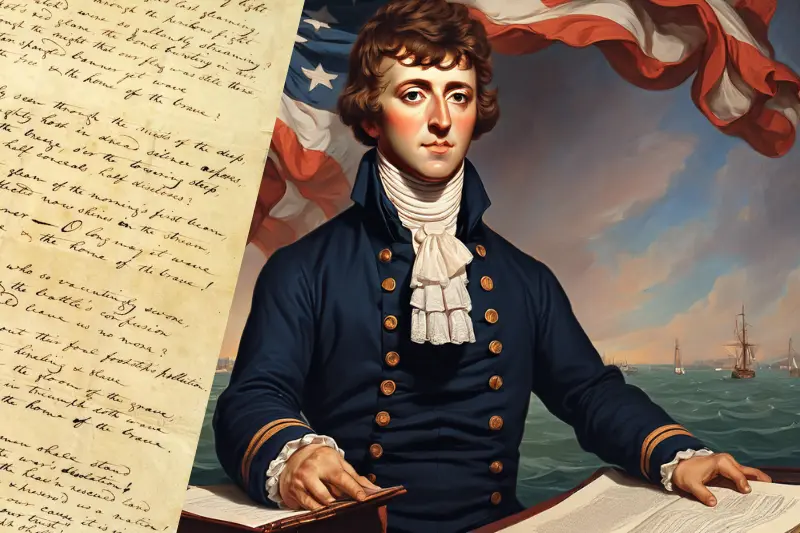What Do the Stars and Stripes on the American Flag Mean

What Do the Stars and Stripes on the American Flag Mean
The American flag is a powerful symbol of the United States, instantly recognizable around the globe. With its bold red and white stripes and a blue field of white stars, the flag embodies the history, values, and identity of the nation. But what do the stars and stripes on the American flag mean? In this article, we’ll explore the history, symbolism, and significance of the stars and stripes, providing a deeper understanding of this iconic emblem.
The History of the American Flag
The origins of the American flag date back to the Revolutionary War, a time when the thirteen colonies were fighting for independence from British rule. On June 14, 1777, the Continental Congress passed the first Flag Act, which stated:
“Resolved, That the flag of the thirteen United States be thirteen stripes, alternate red and white; that the union be thirteen stars, white in a blue field, representing a new constellation.”
This resolution established the basic design of the flag, with thirteen stripes and thirteen stars. The number of stars and stripes represented the thirteen original colonies that declared independence from Britain.
The Meaning of the Stripes | What Do the Stars and Stripes on the American Flag Mean
The thirteen stripes on the American flag are perhaps the most straightforward aspect of its design. They symbolize the thirteen original colonies that united to form the United States. These colonies were:
1. Delaware
2. Pennsylvania
3. New Jersey
4. Georgia
5. Connecticut
6. Massachusetts
7. Maryland
8. South Carolina
9. New Hampshire
10. Virginia
11. New York
12. North Carolina
13. Rhode Island
The alternating red and white stripes create a striking visual pattern and carry specific meanings. Red symbolizes hardiness and valor, reflecting the courage and strength required to fight for independence. White represents purity and innocence, signifying the nation’s ideals and the aspirational nature of its founding principles.
The Meaning of the Stars
The stars on the American flag are a symbol of unity and the “new constellation” of states forming the nation. Each star represents one state in the Union, and as the United States expanded, new stars were added to the flag. Today, the flag features fifty stars, representing the fifty states.
The stars are arranged in nine rows of alternating five and six stars each. This arrangement is both aesthetically pleasing and practical, ensuring that each star is clearly visible.
The blue field, known as the canton, where the stars are placed, signifies vigilance, perseverance, and justice. These qualities are foundational to the nation’s ethos and are reflected in the steadfastness of the American people and their commitment to justice.
Symbolism of Each Star and State
Each star on the American flag not only represents a state but also the unique character and contributions of that state to the Union. Below is a brief overview of the significance of each state:
1. **Delaware**: The first state to ratify the Constitution, symbolizing the pioneering spirit and leadership.
2. **Pennsylvania**: Known for its historical significance with Philadelphia as the nation’s birthplace, representing liberty and independence.
3. **New Jersey**: Key battleground in the Revolutionary War, symbolizing resilience and strategic importance.
4. **Georgia**: A founding state with rich agricultural history, representing growth and resourcefulness.
5. **Connecticut**: Known for its contributions to constitutional law and industry, symbolizing innovation.
6. **Massachusetts**: Birthplace of the American Revolution, representing education and activism.
7. **Maryland**: Important in early American history and home to the Star-Spangled Banner, symbolizing defense and patriotism.
8. **South Carolina**: Early leader in the fight for independence, symbolizing bravery and tenacity.
9. **New Hampshire**: First state to establish an independent government, representing sovereignty and independence.
10. **Virginia**: Birthplace of eight U.S. presidents, symbolizing leadership and governance.
11. **New York**: Financial and cultural hub, representing diversity and dynamism.
12. **North Carolina**: Site of the first powered flight, symbolizing progress and innovation.
13. **Rhode Island**: Last of the original colonies to join the Union, symbolizing individuality and freedom of thought.
As the nation expanded, additional states were admitted, each contributing to the growing fabric of the Union:
14. **Vermont**: Known for its independence and progressive policies, symbolizing freedom and social justice.
15. **Kentucky**: Important for its role in westward expansion, symbolizing exploration and adventure.
16. **Tennessee**: Crucial in the Civil War and home to significant cultural heritage, symbolizing unity and heritage.
17. **Ohio**: Industrial powerhouse, symbolizing innovation and economic strength.
18. **Louisiana**: Known for its unique cultural blend and port city of New Orleans, symbolizing cultural richness.
19. **Indiana**: Agricultural and industrial contributions, symbolizing growth and productivity.
20. **Mississippi**: Rich in history and culture, symbolizing perseverance and heritage.
21. **Illinois**: Home to Abraham Lincoln and a major transportation hub, symbolizing leadership and connectivity.
22. **Alabama**: Known for its role in the Civil Rights Movement, symbolizing justice and change.
23. **Maine**: Abundant natural resources and maritime history, symbolizing resilience and exploration.
24. **Missouri**: Gateway to the West, symbolizing expansion and adventure.
25. **Arkansas**: Rich in natural resources, symbolizing abundance and growth.
26. **Michigan**: Automotive industry hub, symbolizing innovation and industrial power.
27. **Florida**: Known for its diverse population and tourism industry, symbolizing warmth and hospitality.
28. **Texas**: Renowned for its size and cultural influence, symbolizing strength and independence.
29. **Iowa**: Agricultural leader, symbolizing productivity and growth.
30. **Wisconsin**: Dairy production and progressive politics, symbolizing sustenance and social progress.
31. **California**: Economic powerhouse and cultural trendsetter, symbolizing innovation and diversity.
32. **Minnesota**: Known for its lakes and natural beauty, symbolizing resilience and environmental stewardship.
33. **Oregon**: Pioneer spirit and environmental consciousness, symbolizing adventure and sustainability.
34. **Kansas**: Agricultural and historical significance, symbolizing growth and perseverance.
35. **West Virginia**: Formed during the Civil War, symbolizing unity and courage.
36. **Nevada**: Known for its mining and entertainment industry, symbolizing wealth and vibrancy.
37. **Nebraska**: Agricultural and rural character, symbolizing abundance and hard work.
38. **Colorado**: Known for its natural beauty and outdoor recreation, symbolizing adventure and exploration.
39. **North Dakota**: Agricultural and energy production, symbolizing resilience and resourcefulness.
40. **South Dakota**: Known for Mount Rushmore and natural beauty, symbolizing heritage and national pride.
41. **Montana**: Rich in natural resources and scenic landscapes, symbolizing vastness and freedom.
42. **Washington**: Technological innovation and environmental stewardship, symbolizing progress and sustainability.
43. **Idaho**: Known for its rugged terrain and agricultural output, symbolizing resilience and growth.
44. **Wyoming**: First state to grant women the right to vote, symbolizing equality and pioneering spirit.
45. **Utah**: Known for its unique history and natural beauty, symbolizing faith and perseverance.
46. **Oklahoma**: Rich Native American history and oil industry, symbolizing cultural diversity and resourcefulness.
47. **New Mexico**: Known for its cultural heritage and natural beauty, symbolizing cultural richness and exploration.
48. **Arizona**: Known for its desert landscapes and historical significance, symbolizing endurance and heritage.
49. **Alaska**: Vast wilderness and natural resources, symbolizing adventure and natural beauty.
50. **Hawaii**: Unique cultural heritage and strategic location, symbolizing diversity and unity.
Evolution of the Flag’s Design
The design of the American flag has evolved over time to reflect the growth of the nation. Each time a new state was admitted to the Union, a star was added to the flag on the following July 4th. This practice has continued since the early days of the Republic.

The most significant changes to the flag occurred during periods of rapid expansion in the 19th century. For example, between 1795 and 1818, the flag featured fifteen stripes and fifteen stars to represent the admission of Vermont and Kentucky. However, as more states joined the Union, it became clear that adding more stripes would make the flag unwieldy. In 1818, Congress passed a new Flag Act that restored the original thirteen stripes and provided for the addition of a star for each new state.
Symbolism in American Culture
The stars and stripes on the American flag have come to symbolize much more than the original colonies and states. They represent the enduring spirit of the nation, the values of democracy and freedom, and the sacrifices made by generations of Americans.
Throughout history, the flag has been a powerful symbol in times of conflict and peace. During the Civil War, it represented the Union and the fight to preserve the nation. In the 20th century, the flag became a symbol of American strength and resolve during World War II and the Cold War. It was famously raised on Iwo Jima, a moment captured in one of the most iconic photographs of the war.
In times of national crisis, such as the September 11 attacks, the flag serves as a rallying point, embodying the resilience and unity of the American people. It is flown at public buildings, homes, and schools, and displayed at patriotic events, reinforcing its role as a symbol of national identity.
What Do the Stars and Stripes on the American Flag Mean
In contemporary America, the flag continues to be a potent symbol of national pride and identity. It is prominently displayed on national holidays such as.
Leave a comment if you liked our post “What Do the Stars and Stripes on the American Flag Mean”






